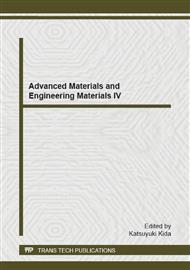[1]
Information on http: /www. who. int/tb/publications/global_report/gtbr13_main_text. pdf.
Google Scholar
[2]
Zhao J, Sun Z, Yang H, et al. Cloning, expression and immunological evaluation of a short fragment from Rv3391 of Mycobacterium tuberculosis[J]. Annals of Microbiology, 2011, 61(2): 345-353.
DOI: 10.1007/s13213-010-0148-7
Google Scholar
[3]
Zhang S L, Zhao J W, Sun Z Q, et al. Development and evaluation of a novel multiple-antigen ELISA for serodiagnosis of tuberculosis[J]. Tuberculosis, 2009, 89(4): 278-284.
DOI: 10.1016/j.tube.2009.05.005
Google Scholar
[4]
Figueroa-Santiago O, Delgado B, Espino A M. Fasciola hepatica saposin-like protein-2–based ELISA for the serodiagnosis of chronic human fascioliasis[J]. Diagnostic microbiology and infectious disease, 2011, 70(3): 355-361.
DOI: 10.1016/j.diagmicrobio.2011.03.016
Google Scholar
[5]
Rong G, Weiss S M. Biomolecule size dependent sensitivity of porous silicon sensors[J]. Physica status solidi (a), 2009, 206(6): 1365-1368.
DOI: 10.1002/pssa.200881097
Google Scholar
[6]
Wu B, Rong G, Zhao J, et al. A nanoscale porous silicon microcavity biosensor for novel label-free tuberculosis antigen–antibody detection[J]. Nano, 2012, 7(06).
DOI: 10.1142/s179329201250049x
Google Scholar
[7]
Patil S A, Ramu G, Patil M. Lipoarabinomannan antigen and anti-lipoarabinomannan antibody profile in the serum of patients with mycobacterial infections and their significance in disease process[J]. Serodiagnosis and immunotherapy in infectious disease, 1995, 7(2): 59-63.
DOI: 10.1016/0888-0786(95)95346-r
Google Scholar
[8]
Ryckman J D, Liscidini M, Sipe J E, et al. Porous silicon structures for low-cost diffraction-based biosensing[J]. Applied Physics Letters, 2010, 96(17): 171103.
DOI: 10.1063/1.3421545
Google Scholar
[9]
Mandenius C F, Welin S, Danielsson B, et al. The interaction of proteins and cells with affinity ligands covalently coupled to silicon surfaces as monitored by ellipsometry[J]. Analytical biochemistry, 1984, 137(1): 106-114.
DOI: 10.1016/0003-2697(84)90354-3
Google Scholar
[10]
Lugo J E, Del Rio J A, Tagüena-Martınez J. Influence of surface coverage on the effective optical properties of porous silicon modeled as a Si-wire array[J]. Journal of applied physics, 1997, 81(4): 1923-(1928).
DOI: 10.1063/1.364047
Google Scholar
[11]
Hecht, Optics, 2nd ed., Addison Wesley, New York, (1987).
Google Scholar
[12]
Raju R, Suneetha S, Sagili K, et al. Diagnostic role of the antibody response to the 38kDa, 16kDa proteins and lipoarabinomannan of mycobacterium tuberculosis[J]. Indian Journal of Clinical Biochemistry, 2005, 20(1): 123-128.
DOI: 10.1007/bf02893056
Google Scholar


